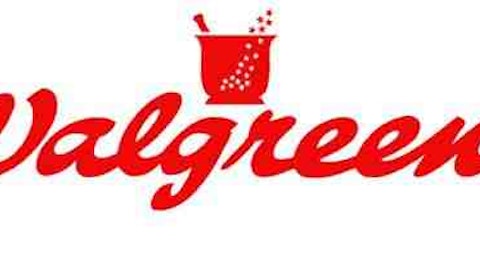The real-money Inflation-Protected Income Growth portfolio operates based on three key investing principles inspired by Benjamin Graham: dividends, valuation, and diversification. Graham, the father of the value investing strategy and the man who taught investing to Warren Buffett, designed his strategy around those timeless investing principles, which still work well today.
Since last week’s update, the iPIG portfolio gained a bit more than $250 in value. In so doing, it showcased how all three factors act together to drive risk-adjusted returns.
Putting Graham to work

Dividends play a foundational part in the iPIG portfolio, which looks to generate an income stream that increases at least as fast as inflation. The portfolio was created in December 2012 with $30,000. No additional capital has been added, but thanks to dividends, the portfolio has invested a touch more than $30,094 in its holdings and still has a bit above $254 in cash on hand.
Valuation: On Tuesday, pharmacy retailer and iPIG pick Walgreen Company (NYSE:WAG) reported earnings numbers that failed to live up to Wall Street’s expectations. Predictably, the company’s shares dropped on the news. Still, the iPIG portfolio is sitting on a nearly 18% gain since those shares were purchased in January. The reason? When selected, Walgreen Company (NYSE:WAG) traded at something of a discount to its fair value estimate.
Graham made the case that companies trading below their fair value estimates had what he called a margin of safety priced into their shares. With a margin of safety, companies can slip up by a bit and still potentially be worth more than an investor paid for them. There are no guarantees, of course, but looking for Graham’s margin of safety can tilt the odds more toward your favor.
Diversification: While diversification in and of itself won’t enhance an investor’s expected returns, it can protect a portfolio from the failure of any one holding within it. The iPIG portfolio was built with an eye toward diversification, as it was designed to own around 20 positions across a variety of industries.
Thanks to the market’s moves since the iPIG’s inception, the portfolio’s value is up about 14%. Thanks to diversification, the portfolio could lose the entire value of its two top holdings, electric generator NV Energy, Inc. (NYSE:NVE) and toy maker Hasbro, Inc. (NASDAQ:HAS), and still be worth more than when it started.
Of course, neither company is expected to go out of business anytime soon. Indeed, NV Energy is on track to be bought out by Berkshire Hathaway Inc. (NYSE:BRK.A) for a substantial premium to the iPIG portfolio’s cost. And while Hasbro has reported mixed results recently, it is still expected to grow its earnings over the next several years.
Diversification didn’t give the portfolio the 14% improvement in value it has seen since inception. It is, however, providing an important sleep-at-night benefit that comes from knowing that the potential failure of any one pick won’t translate into a certain failure for the overall portfolio.
Graham’s strategies get the job done
Put together all three aspects of this Graham-inspired strategy, and the result is something that looks like the iPIG portfolio. That portfolio finished last week looking like this:
| Company Name | Purchase Date | Number of Shares | Total Investment (including commissions) | Value as of June 28, 2013 |
|---|---|---|---|---|
| United Technologies | 12/10/2012 | 18 | $1,464.82 | $1,672.92 |
| Teva Pharmaceutical | 12/12/2012 | 38 | $1,519.40 | $1,489.60 |
| J.M. Smucker | 12/13/2012 | 17 | $1,483.45 | $1,753.55 |
| Genuine Parts | 12/21/2012 | 23 | $1,476.47 | $1,795.61 |
| Mine Safety Appliances | 12/21/2012 | 36 | $1,504.96 | $1,675.80 |
| Microsoft | 12/26/2012 | 55 | $1,499.15 | $1,899.70 |
| Hasbro | 12/28/2012 | 43 | $1,520.60 | $1,927.69 |
| NV Energy | 12/31/2012 | 84 | $1,504.72 | $1,970.64 |
| United Parcel Service | 1/2/2013 | 20 | $1,524.00 | $1,729.60 |
| Walgreen | 1/4/2013 | 40 | $1,501.80 | $1,768.00 |
| Texas Instruments | 1/7/2013 | 47 | $1,515.70 | $1,637.95 |
| Union Pacific | 1/22/2013 | 6 | $805.42 | $925.68 |
| CSX | 1/22/2013 | 34 | $712.50 | $788.46 |
| McDonald’s | 1/24/2013 | 16 | $1,499.64 | $1,584.00 |
| Becton, Dickinson | 1/31/2013 | 18 | $1,518.64 | $1,778.94 |
| AFLAC | 2/5/2013 | 27 | $1,466.35 | $1,569.24 |
| Air Products & Chemicals | 2/11/2013 | 17 | $1,510.99 | $1,556.69 |
| Raytheon | 2/22/2013 | 27 | $1,473.91 | $1,785.24 |
| Emerson Electric | 4/3/2013 | 28 | $1,548.12 | $1,527.12 |
| Wells Fargo & Co | 5/30/2013 | 37 | $1,525.48 | $1,526.99 |
| Kinder Morgan | 6/21/2013 | 42 | $1,518.37 | $1,602.30 |
| Cash | $254.50 | |||
Data from the iPIG portfolio brokerage account as of June 28, 2013.
Not bad for a strategy based on ideas that are nearly a century old.
The article How Graham-Inspired Investing Still Works Today originally appeared on Fool.com and is written by Chuck Saletta.
Chuck Saletta owns shares of Aflac, Texas Instruments, Microsoft, McDonald’s, Genuine Parts Company, United Technologies, Wells Fargo, Teva Pharmaceutical Industries, Emerson Electric Co., Becton Dickinson, Walgreen, Union Pacific, Hasbro, United Parcel Service, CSX, J.M. Smucker, Air Products & Chemicals, Mine Safety Appliances, NV Energy, Raytheon, and Kinder Morgan. The Motley Fool recommends Aflac, Becton Dickinson, Berkshire Hathaway, Emerson Electric Co., Hasbro, Kinder Morgan, McDonald’s, Mine Safety Appliances, United Parcel Service, and Wells Fargo. It owns shares of Berkshire Hathaway, Hasbro, Kinder Morgan, McDonald’s, Microsoft, Raytheon, and Wells Fargo.
Copyright © 1995 – 2013 The Motley Fool, LLC. All rights reserved. The Motley Fool has a disclosure policy.




